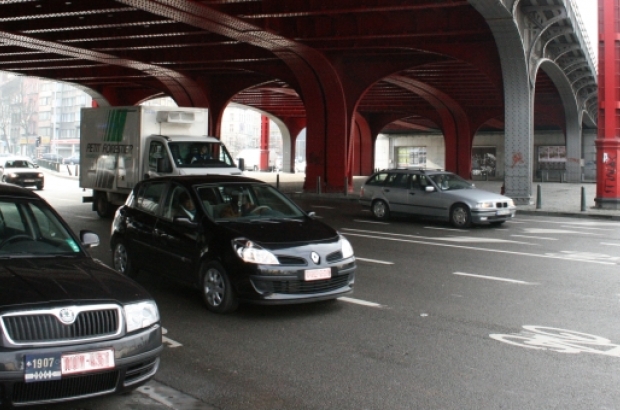- Daily & Weekly newsletters
- Buy & download The Bulletin
- Comment on our articles
Braving the roads: Driving in Belgium
Belgian drivers have a certain reputation, but a little common sense goes a long way. Here are a few points to bear in mind.
It’s true that Belgium used to be notorious for road safety, although things have much improved in recent years. That’s largely the result of stricter laws that include more speed checks, breathalyser tests and blood testing for suspected drug users. Penalties and fines have become tougher and the number of circumstances in which licences can be withdrawn have increased.
Still, around 20 people are killed or severely injured every day on Belgian roads. Every year, more than one person in 200 is injured in an accident. For most first-time drivers in Belgium, the greatest novelty, and the most likely cause of accident, is the ‘priority to the right’ rule. You may be driving down a main road and a car simply zips on to it from a blind corner on the right – and, surprisingly enough, they have priority.
But it doesn’t apply to every junction. The easiest way to spot whether you have priority over traffic from the right is to look for white triangles painted on the incoming road, or a yellow and white diamond sign to your right as you approach a junction. Once you’ve got used to it, the system does actually work and, according to the authorities, achieves the rule’s initial aim of slowing traffic down.
Belgians are often lazy in using indicators, so don’t be surprised if someone pulls out in front of you on the motorway with no warning. You will also find that drivers enjoy occupying the middle lane on motorways. No matter how tempted, do not overtake on the inside – it’s illegal, even if a lot of people do it. Seatbelts front and rear are obligatory, and children shorter than 135cm must travel in an appropriate car seat. On motorways, the speed limits are a minimum 70kph and maximum 120kph.
Buses have priority provided they have signalled, and trams always have priority, so pay particular attention – 12 tonnes of metal doesn’t stop easily. Drivers here have yet to acquire the habit – and legal requirement – of stopping for pedestrians at zebra crossings. You may like to set a good example.
You only have to look at the number of bumps and scratches on Belgian cars to realise that accidents happen all too often. The main thing is to keep calm and courteous. If it’s a slight prang, then it may not be worth getting the insurance company involved, so you can try and settle amicably. If it’s more serious, first get witnesses’ contact details, then fill in the mandatory constat d’accident form, which should be in your glove compartment at all times. You may also want to see the other driver’s green insurance form (which also must be in the car at all times) and they may want to see yours. Make sure you mention any injuries, to yourself or passengers, on the accident statement. The insurance companies will decide whose fault it is, so make sure you simply state the facts and don’t end up writing an admission of guilt. Do not add anything once the form is signed by both parties as this could constitute fraud.









